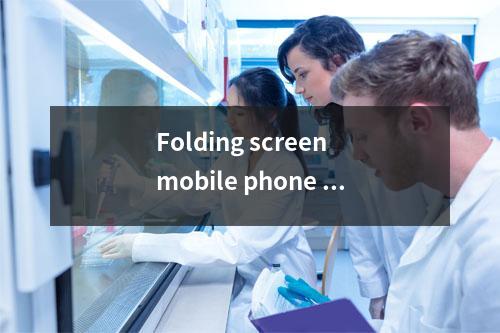
1. Test items
Screen folding performance test: This is a key link, focusing on the durability of the screen. Open and close the folding screen thousands of times to observe whether there are creases, bright spots, bad spots and other problems, record the frequency and depth of creases, and ensure that the screen folding performance is stable within the normal service life, without affecting the visual perception and touch operation.
Display effect test: Test the brightness, contrast, color saturation and other indicators of the screen when folded and unfolded. Use a professional color analyzer to compare the standard color card to check the color restoration. Whether it is viewing the map outdoors under strong light or watching videos in a dark environment, the picture must be clear and the color must be realistic; at the same time, check whether the picture is distorted and whether the display is uniform at different folding angles.
Performance stability test: Run multiple large-scale games and multi-tasking software, simulate long-term high-intensity use scenarios, monitor processor temperature, running frame rate and other parameters, and ensure that the phone can run smoothly when folded and unfolded, and there will be no performance fluctuations due to structural changes, such as game freezes and multi-task switching sluggishly after folding.
Body structure strength test: Apply pressure and torque to key parts such as the body shell and hinges to simulate daily squeezing, collision, and twisting, check whether the shell is deformed, whether the hinge is loose or damaged, and ensure the safety of internal components when the mobile phone is subjected to unexpected force, so as to maintain normal use.
2. Testing method
Mechanical fatigue test method: Use professional folding equipment to repeatedly fold the folding screen according to the preset frequency and angle, and use microscopes and optical testing instruments to monitor the screen status in real time, accurately capture subtle damage, and provide data for screen life assessment.
Laboratory environment simulation method: In a laboratory environment with constant temperature, constant humidity, and different light intensities, test the display effect and performance of the mobile phone, eliminate external interference, and obtain stable and accurate test results; at the same time, simulate special environments such as sand, dust, and splashing water to test the protection ability of the mobile phone.
Actual use tracking method: Invite different user groups to try folding screen mobile phones in daily work, life, and entertainment scenarios, collect feedback information, and discover problems such as one-handed operation convenience and carrying comfort in the folded state from the perspective of user experience.
3. Testing standards
National standards stipulate basic safety and performance indicators, such as electromagnetic radiation limits and battery safety standards, to ensure consumer safety; industry standards refine indicators such as screen bending times and display accuracy based on technological development to guide companies to improve product competitiveness; international standards promote product integration with the international market, meet global market demand, and enhance the brand's international influence.
4. Significance of testing
For manufacturers, strict testing promotes technological innovation, optimizes product design and technology, and creates high-quality brands; for consumers, they can choose folding screen mobile phones with reliable quality and excellent performance, enjoy the convenient life brought by cutting-edge technology, and promote the vigorous development of the folding screen mobile phone industry.


 National free customer service telephone 400-101-7153
National free customer service telephone 400-101-7153 
